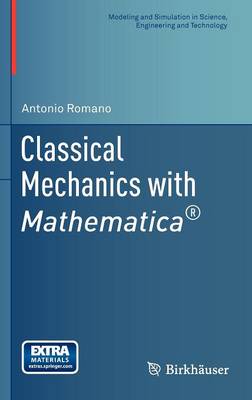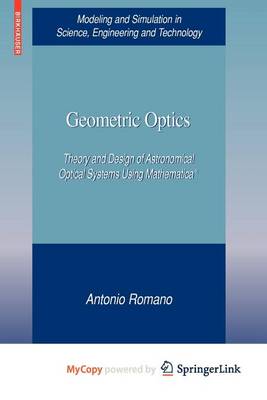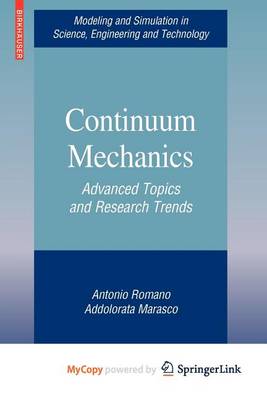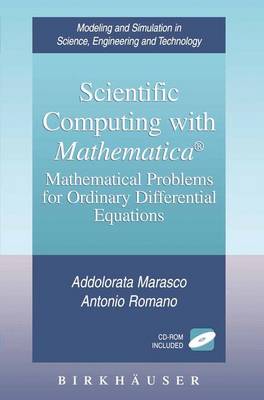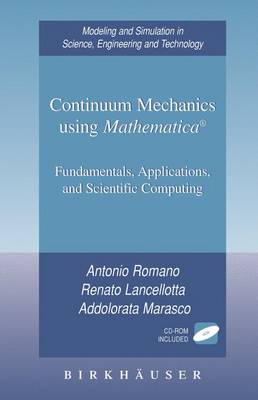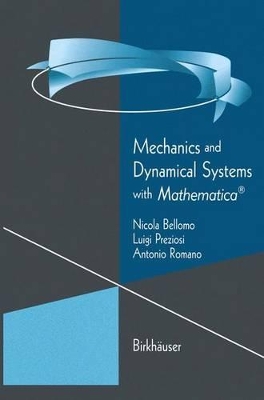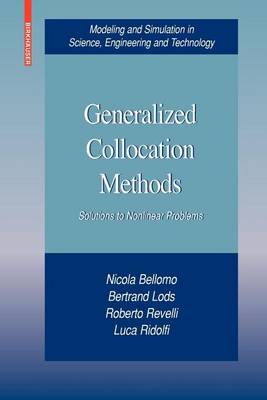Modeling and Simulation in Science, Engineering and Technology
10 total works
Continuum Mechanics using Mathematica (R)
by Antonio Romano and Addolorata Marasco
This textbook takes a broad yet thorough approach to mechanics, aimed at bridging the gap between classical analytic and modern differential geometric approaches to the subject. Developed by the author from 35 years of teaching experience, the presentation is designed to give students an overview of the many different models used through the history of the field-from Newton to Lagrange-while also painting a clear picture of the most modern developments. Throughout, it makes heavy use of the powerful tools offered by Mathematica .
The volume is organized into two parts. The first focuses on developing the mathematical framework of linear algebra and differential geometry necessary for the remainder of the book. Topics covered include tensor algebra, Euclidean and symplectic vector spaces, differential manifolds, and absolute differential calculus. The second part of the book applies these topics to kinematics, rigid body dynamics, Lagrangian and Hamiltonian dynamics, Hamilton-Jacobi theory, completely integrable systems, statistical mechanics of equilibrium, and impulsive dynamics, among others.
Unique in its scope of coverage and method of approach, Classical Mechanics will be a very useful resource for graduate students and advanced undergraduates in applied mathematics and physics who hope to gain a deeper understanding of mechanics.
Scientific Computing with Mathematica (R)
by Addolorata Marasco and Antonio Romano
and chemical systems can be described by ordinary differential
equations (ODEs).
Scientific Computing with Mathematica for Ordinary Differential
Equations
provides a general framework useful for the applications, on the
conceptual aspects of the theory of ODEs, as well as a sophisticated
use of Mathematica software for the solutions of problems related to
ODEs. In particular, a chapter is devoted to the use ODEs and
Mathematica in the Dynamics of rigid bodies.
Mathematical methods and scientific computation are dealt with jointly
to supply a unified presentation. The main problems of ordinary
differential equations such
as, phase portrait, approximate solutions, periodic orbits, stability,
bifurcation, and
boundary problems are covered in an integrated fashion with numerous
worked examples and computer program demonstrations using
Mathematica.
Topics and Features:*Explains how to use the Mathematica package ODE.m
to support qualitative and quantitative problem solving *End-of-
chapter exercise sets incorporating the use of Mathematica programs
*Detailed description and explanation of the mathematical procedures
underlying the programs written in Mathematica *Appendix describing
the use of ten notebooks to guide the reader through all the
exercises.
This book is an essential text/reference for students, graduates and
practitioners in applied mathematics and engineering interested in
ODE's problems in both the qualitative and quantitative description of
solutions with the Mathematica program. It is also suitable as a self-
Continuum Mechanics Using "Mathematica"
by Antonio Romano, Renato Lancellotta, and Addolorata Marasco
Mechanics and Dynamical Systems with Mathematica (R)
by Nicola Bellomo, Luigi Preziosi, and Antonio Romano
Mechanics and Dynamical Systems with Mathematica
by Nicola Bellomo, Luigi Preziosi, and Antonio Romano
Generalized Collocation Methods
by Nicola Bellomo, Bertrand Lods, and Roberto Revelli
Analysis of nonlinear models and problems is crucial in the application of mathematics to real-world problems. This book approaches this important topic by focusing on collocation methods for solving nonlinear evolution equations and applying them to a variety of mathematical problems. These include wave motion models, hydrodynamic models of vehicular traffic flow, convection-diffusion models, reaction-diffusion models, and population dynamics models. The book may be used as a textbook for graduate courses on collocation methods, nonlinear modeling, and nonlinear differential equations. Examples and exercises are included in every chapter.

